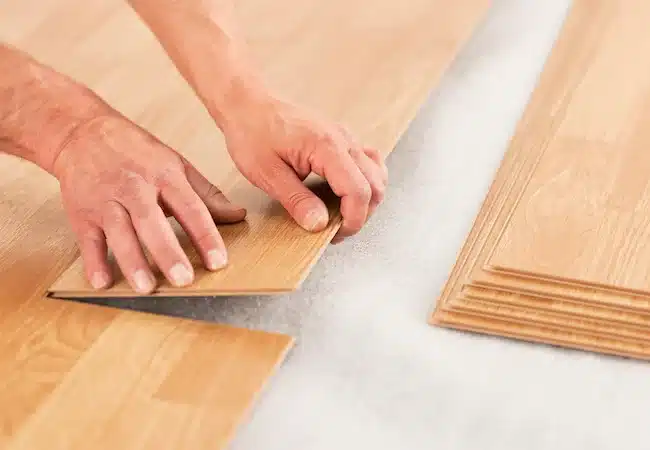The measure of bedding quality and the promise of luxurious, soft sheets for a restful night’s sleep have often been attributed to the thread count. However, much like the deceptive allure of a high-priced item, thread count meaning can be misleading, often overshadowing other crucial factors that contribute to the overall quality of sheets.
The thread count metric fervor often fails to capture the nuanced contribution of fiber type, yarn quality, and construction, which collectively contribute to the symphony of a truly exceptional sleep experience.
In this article, we will shed light on the misconceptions and discover the true essence of bedding excellence as we explore the depths of thread count, unveiling the secrets that lie beyond mere numbers.
Table of contents
- What is Thread Count?
- How Is Thread Count Measured?
- What Is The Ideal Thread Count For Bedding?
- Dispelling Common Thread Count Myths?
- What Are Some Practical Tips For Navigating Thread Count Maze?
- What Are The Pros And Cons Of High Thread Count Bedding?
- What Is The Difference Between Thread Count And Fabric Weight?
- What Are Some Factors To Consider When Choosing Bedding?
- Frequently Asked Questions
- Conclusion
- References
- Recommendations
What is Thread Count?
Thread count is the number of threads woven into a square inch of fabric. It is a measure of the density of the fabric, and a higher thread count generally indicates a denser weave. Thread count is often used as a marketing tool for bedding, and it is often touted as a measure of quality. However, thread count is not the only factor that determines the quality of bedding. Other important factors include fiber type, yarn quality, and construction.
The thread count number is determined by counting the vertical (warp) threads and horizontal (weft) threads intersecting within a one-inch area. A higher thread count generally indicates a denser weave, which can translate to a smoother, softer feel. However, it’s important to note that thread count is just one piece of the puzzle when it comes to bedding quality.
While thread count can provide some insight into the fabric’s density, it fails to account for other critical factors that influence sheet quality, such as fiber type, yarn quality, and construction. For instance, a 400-thread-count sheet made from inferior fibers may not feel as soft or luxurious as a 200-thread-count sheet crafted from high-quality fibers like Egyptian cotton or Supima cotton.
When it comes to thread count, finding the perfect balance is key. An excessively high thread count can lead to sheets that are too heavy, difficult to care for, and more prone to pilling. On the other hand, an extremely low thread count may result in sheets that feel rough, lack durability, and fail to provide the desired level of comfort.
Read also: 10 Best Tools For Working On Cars In 2024 | Best Tools
How Is Thread Count Measured?

Thread count is measured by counting the number of warp and weft threads that intersect within a square inch of fabric. For example, a 400-thread-count fabric would have 200 warp threads and 200 weft threads per square inch.
While thread count is a measure of the density of the fabric, it is not a direct measure of the softness of the fabric. Other factors, such as fiber type, yarn quality, and construction, also play a role in determining the softness of bedding.
What Is The Ideal Thread Count For Bedding?
The ideal thread count for bedding depends on personal preference and individual needs. However, a general rule of thumb is that a thread count of 200 to 400 is a good starting point for most sleepers.
Here is a more detailed breakdown of ideal thread counts for different types of sleepers:
- For warm sleepers: A thread count of 200 to 300 is ideal for warm sleepers, as it allows for better air circulation and prevents overheating.
- For average sleepers: A thread count of 300 to 400 is a good choice for average sleepers, as it provides a balance of softness, breathability, and durability.
- For cold sleepers: Cold sleepers may prefer a thread count of 400 or higher, as the denser weave can help to trap warmth and keep them cozy throughout the night.
Of course, there are always exceptions to the rule. Some people may find that they prefer a lower thread count, while others may prefer a higher thread count. It is important to experiment with different thread counts to find what feels best to you.
Dispelling Common Thread Count Myths?
Thread count is often touted as a measure of quality for bedding, but it’s important to dispel some common myths surrounding this metric:
Myth 1: Higher thread count equals higher quality.
False. Thread count is just one factor among many that contribute to sheet quality. Fiber type, yarn quality, and construction are equally important. A 400-thread-count sheet made from inferior fibers may not feel as soft or luxurious as a 200-thread-count sheet crafted from high-quality fibers like Egyptian cotton or Supima cotton.
Myth 2: Thread count is standardized.
False. Thread count standards vary between manufacturers and regions, making it difficult to directly compare thread counts across different brands. This lack of standardization can lead to misleading claims and inflated thread count numbers.
Myth 3: You need a high thread count for luxury sheets.
False. Luxury sheets can be found at various thread counts, depending on the fiber type, yarn quality, and construction. A high thread count doesn’t guarantee luxury; the overall quality of the materials and craftsmanship play a more significant role.
Myth 4: A higher thread count means softer sheets.
False. Thread count is one factor that can influence softness, but it’s not the sole determinant. Fiber type, yarn quality, and construction also play a significant role in determining the softness of sheets.
Myth 5: A higher thread count means more durable sheets.
False. While a denser weave can sometimes contribute to durability, it’s not the only factor. Fiber type, yarn quality, and construction play equally important roles in determining the durability of sheets.
Read also: 21 Best Online Sewing Classes in | Beginners & Free
Navigating the thread count maze can be tricky, especially with the abundance of information and marketing claims surrounding this metric. Here are some practical tips to help you make informed decisions when selecting bedding:
1. Prioritize fiber type
Focus on bedding made from natural fibers known for their softness, breathability, and durability. These include Egyptian cotton, Supima cotton, Pima cotton, linen, and silk.
2. Evaluate yarn quality
Opt for bedding made from high-quality, long-staple fibers that ensure strength and resistance to pilling. Look for certifications like Supima® or Pima Cotton® for assurance of fiber quality.
3. Assess construction
Choose bedding with a tight weave and well-finished seams to prevent fraying and enhance durability. Sateen weaves are known for their smooth, luxurious feel, while percale weaves offer a crisper, cooler feel.
4. Consider personal preferences
Thread count is just one factor; your comfort should be the ultimate priority. Experiment with different thread counts and fabrics to find what suits your sleeping style and preferences.
5. Beware of thread count myths
Don’t fall prey to exaggerated claims about thread count. A higher thread count doesn’t guarantee superior quality; fiber type, yarn quality, and construction play equally important roles.
6. Seek trusted recommendations
Consult online reviews, seek advice from experts, and visit reputable stores to touch and feel different fabrics before making a purchase.
7. Embrace quality over quantity
Invest in a few high-quality sets of bedding rather than accumulating multiple low-quality sets. Quality bedding will last longer and provide a more comfortable sleep experience.
8. Care for your bedding properly
Follow the care instructions for your bedding to ensure it retains its quality and longevity. Proper washing, drying, and storage can significantly extend the lifespan of your bedding.
Read also: How To Make Your Essay Longer Tiktok
What Are The Pros And Cons Of High Thread Count Bedding?
High thread count bedding often gets a lot of attention, but it’s important to understand both the pros and cons before making a decision about your bedding. Here’s a summary of the key advantages and disadvantages of high thread count bedding:
Pros
- Softer and smoother feel: High thread count bedding generally feels softer and smoother to the touch, providing a more luxurious sleeping experience.
- Enhanced breathability: The tighter weave of high thread count bedding can enhance breathability, allowing for better air circulation and keeping you cool and comfortable throughout the night.
- Potential for durability: High thread count bedding, when made from high-quality materials, can be more durable and resistant to pilling or wear and tear.
Cons
- Higher cost: High thread count bedding is typically more expensive than lower thread count bedding, making it a more significant investment.
- Increased weight: The denser weave of high thread count bedding can make the fabric heavier, which may not be ideal for warm sleepers or those who prefer lighter bedding.
- Potential for pilling: While high thread count bedding can be durable, it is not immune to pilling, especially if not cared for properly.
- Misconceptions about quality: Thread count is just one factor that contributes to bedding quality. High thread count bedding made from inferior materials may not provide the same level of comfort or durability as lower thread count bedding made from high-quality materials.
What Is The Difference Between Thread Count And Fabric Weight?
Thread count and fabric weight are two distinct measures used to describe fabric properties. While they may seem interrelated, they serve different purposes and convey different information about the fabric.
Thread count refers to the number of threads woven into a square inch of fabric. It is a measure of the fabric’s density and can influence its feel and appearance. A higher thread count generally indicates a denser weave, which may result in a softer, smoother, and more luxurious feel. However, thread count is not a sole determinant of quality, as other factors like fiber type and yarn quality also play a significant role.
Fabric weight, on the other hand, refers to the thickness or heaviness of the fabric. It is typically measured in grams per square meter (gsm) and indicates the amount of fabric material per unit area. A higher fabric weight generally indicates a thicker and heavier fabric, while a lower fabric weight indicates a thinner and lighter fabric.
Read also: Charles K. Kao Quotes
What Are Some Factors To Consider When Choosing Bedding?
When choosing bedding, it’s crucial to consider various factors that influence your sleep comfort and overall experience. Here are some key aspects to keep in mind:
1. Fabric Type
The type of fabric used for your bedding plays a significant role in its feel, breathability, and temperature regulation. Popular choices include:
- Cotton: Cotton is a versatile and widely used fabric known for its softness, breathability, and durability. It’s available in various grades, such as Egyptian cotton or Supima cotton, which offer superior softness and comfort.

- Linen: Linen is a natural fiber that is highly breathable, moisture-wicking, and durable. It provides a cool and crisp feel, ideal for warm sleepers.

- Silk: Silk is a luxurious and hypoallergenic fiber known for its softness, smoothness, and temperature-regulating properties. It can be delicate and requires careful care.
2. Thread Count
Thread count is often misconstrued as the sole determinant of bedding quality, but it’s just one factor. Thread count refers to the number of threads woven into a square inch of fabric. A higher thread count generally indicates a denser weave, but it doesn’t necessarily translate to better quality.
3. Yarn Quality
The quality of the yarn used to make the bedding is equally important. High-quality, long-staple fibers produce stronger, smoother, and more durable yarn. This translates to bedding that is less likely to pill or wear out prematurely.
4. Construction
The construction of the bedding refers to the type of weave and stitch density. A tight weave with well-finished seams ensures durability and prevents fraying. Different weaves, such as sateen or percale, offer varying textures and feels.
5. Personal Preferences
Ultimately, the best bedding for you depends on your individual preferences and needs. Consider factors like your preferred temperature, sleep style, and aesthetic preferences when making your choice.
Additional Tips:
- Read reviews and compare brands: Before purchasing bedding, read reviews from other customers to get insights into the quality, comfort, and durability of different brands and products.
- Test different fabrics and thread counts: If possible, visit a store to touch and feel different fabrics and thread counts to find what suits you best.
- Consider your budget: Bedding can range in price from affordable to luxury. Set a budget and research options within your price range.
- Invest in quality over quantity: While it’s tempting to buy multiple sets of inexpensive bedding, it’s wiser to invest in a few high-quality sets that will last longer and provide better comfort.
- Care for your bedding properly: Follow the care instructions for your bedding to ensure it retains its quality and longevity.
Read also: 10 Best Tools for Quilting in 2024 | Best Tools
Frequently Asked Questions
The ideal thread count depends on personal preference and specific needs. A range of 200 to 400 thread count is generally considered a good starting point for most sleepers.
Not necessarily. Thread count is just one factor among many that contribute to sheet quality. Fiber type, yarn quality, and construction are equally important.
The choice between 200 and 400 thread count depends on individual preferences. For those who prefer a lighter, crisper feel, a 200 thread count may be sufficient. For those who seek a more luxurious, plush feel, 400 thread count may be a better choice.
Thread counts above 600 are generally considered excessive and may lead to sheets that are too heavy, difficult to care for, and more prone to pilling.
Consider factors like fiber type, yarn quality, construction, thread count, and personal preference when selecting sheets. Consult reviews and seek recommendations from trusted sources.
The primary difference between a 400 thread count and an 800 thread count lies in the density of the weave. An 800 thread count has twice as many threads woven into a square inch compared to a 400 thread count, potentially resulting in a denser, smoother feel. However, the actual difference in feel and quality may vary depending on the fiber type, yarn quality, and construction of the sheets.
Conclusion
Thread count, while often misconstrued as the sole determinant of sheet quality, is just one piece of the puzzle. Do a holistic assessment, considering fiber type, yarn quality, construction, and thread count to uncover the true essence of bedding excellence. After all, the perfect sheets are those that cater to your unique needs and preferences, ensuring a night of undisturbed slumber and blissful comfort.
References
- sleepfoundation.org – What Is the Best Thread Count for Sheets? Here’s the Magic Number
- home.howstuffworks.com – What Is a Good Thread Count for Sheets?





